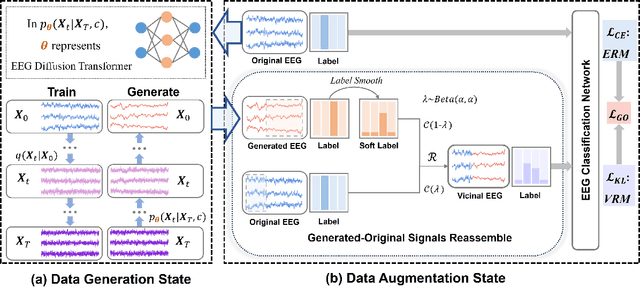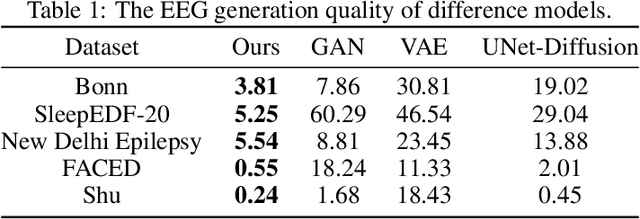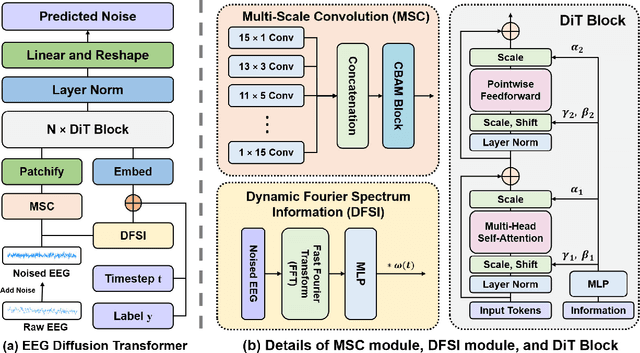Guibo Luo
Federated Learning for Medical Image Classification: A Comprehensive Benchmark
Apr 07, 2025Abstract:The federated learning paradigm is wellsuited for the field of medical image analysis, as it can effectively cope with machine learning on isolated multicenter data while protecting the privacy of participating parties. However, current research on optimization algorithms in federated learning often focuses on limited datasets and scenarios, primarily centered around natural images, with insufficient comparative experiments in medical contexts. In this work, we conduct a comprehensive evaluation of several state-of-the-art federated learning algorithms in the context of medical imaging. We conduct a fair comparison of classification models trained using various federated learning algorithms across multiple medical imaging datasets. Additionally, we evaluate system performance metrics, such as communication cost and computational efficiency, while considering different federated learning architectures. Our findings show that medical imaging datasets pose substantial challenges for current federated learning optimization algorithms. No single algorithm consistently delivers optimal performance across all medical federated learning scenarios, and many optimization algorithms may underperform when applied to these datasets. Our experiments provide a benchmark and guidance for future research and application of federated learning in medical imaging contexts. Furthermore, we propose an efficient and robust method that combines generative techniques using denoising diffusion probabilistic models with label smoothing to augment datasets, widely enhancing the performance of federated learning on classification tasks across various medical imaging datasets. Our code will be released on GitHub, offering a reliable and comprehensive benchmark for future federated learning studies in medical imaging.
EEGMamba: Bidirectional State Space Models with Mixture of Experts for EEG Classification
Jul 20, 2024Abstract:In recent years, with the development of deep learning, electroencephalogram (EEG) classification networks have achieved certain progress. Transformer-based models can perform well in capturing long-term dependencies in EEG signals. However, their quadratic computational complexity leads to significant computational overhead. Moreover, most EEG classification models are only suitable for single tasks, showing poor generalization capabilities across different tasks and further unable to handle EEG data from various tasks simultaneously due to variations in signal length and the number of channels. In this paper, we introduce a universal EEG classification network named EEGMamba, which seamlessly integrates the Spatio-Temporal-Adaptive (ST-Adaptive) module, Bidirectional Mamba, and Mixture of Experts (MoE) into a unified framework for multiple tasks. The proposed ST-Adaptive module performs unified feature extraction on EEG signals of different lengths and channel counts through spatio-adaptive convolution and incorporates a class token to achieve temporal-adaptability. Moreover, we design a bidirectional Mamba particularly suitable for EEG signals for further feature extraction, balancing high accuracy and fast inference speed in processing long EEG signals. In order to better process EEG data for different tasks, we introduce Task-aware MoE with a universal expert, achieving the capture of both differences and commonalities between EEG data from different tasks. We test our model on eight publicly available EEG datasets, and experimental results demonstrate its superior performance in four types of tasks: seizure detection, emotion recognition, sleep stage classification, and motor imagery. The code is set to be released soon.
Improving EEG Classification Through Randomly Reassembling Original and Generated Data with Transformer-based Diffusion Models
Jul 20, 2024



Abstract:Electroencephalogram (EEG) classification has been widely used in various medical and engineering applications, where it is important for understanding brain function, diagnosing diseases, and assessing mental health conditions. However, the scarcity of EEG data severely restricts the performance of EEG classification networks, and generative model-based data augmentation methods emerging as potential solutions to overcome this challenge. There are two problems with existing such methods: (1) The quality of the generated EEG signals is not high. (2) The enhancement of EEG classification networks is not effective. In this paper, we propose a Transformer-based denoising diffusion probabilistic model and a generated data-based data augmentation method to address the above two problems. For the characteristics of EEG signals, we propose a constant-factor scaling method to preprocess the signals, which reduces the loss of information. We incorporated Multi-Scale Convolution and Dynamic Fourier Spectrum Information modules into the model, improving the stability of the training process and the quality of the generated data. The proposed augmentation method randomly reassemble the generated data with original data in the time-domain to obtain vicinal data, which improves the model performance by minimizing the empirical risk and the vicinal risk. We experiment the proposed augmentation method on five EEG datasets for four tasks and observe significant accuracy performance improvements: 14.00% on the Bonn dataset; 25.83% on the New Delhi epilepsy dataset; 4.98% on the SleepEDF-20 dataset; 9.42% on the FACED dataset; 2.5% on the Shu dataset. We intend to make the code of our method publicly accessible shortly
ProMamba: Prompt-Mamba for polyp segmentation
Mar 26, 2024Abstract:Detecting polyps through colonoscopy is an important task in medical image segmentation, which provides significant assistance and reference value for clinical surgery. However, accurate segmentation of polyps is a challenging task due to two main reasons. Firstly, polyps exhibit various shapes and colors. Secondly, the boundaries between polyps and their normal surroundings are often unclear. Additionally, significant differences between different datasets lead to limited generalization capabilities of existing methods. To address these issues, we propose a segmentation model based on Prompt-Mamba, which incorporates the latest Vision-Mamba and prompt technologies. Compared to previous models trained on the same dataset, our model not only maintains high segmentation accuracy on the validation part of the same dataset but also demonstrates superior accuracy on unseen datasets, exhibiting excellent generalization capabilities. Notably, we are the first to apply the Vision-Mamba architecture to polyp segmentation and the first to utilize prompt technology in a polyp segmentation model. Our model efficiently accomplishes segmentation tasks, surpassing previous state-of-the-art methods by an average of 5% across six datasets. Furthermore, we have developed multiple versions of our model with scaled parameter counts, achieving better performance than previous models even with fewer parameters. Our code and trained weights will be released soon.
A Segmentation Foundation Model for Diverse-type Tumors
Mar 11, 2024Abstract:Large pre-trained models with their numerous model parameters and extensive training datasets have shown excellent performance in various tasks. Many publicly available medical image datasets do not have a sufficient amount of data so there are few large-scale models in medical imaging. We propose a large-scale Tumor Segmentation Foundation Model (TSFM) with 1.6 billion parameters using Resblock-backbone and Transformer-bottleneck,which has good transfer ability for downstream tasks. To make TSFM exhibit good performance in tumor segmentation, we make full use of the strong spatial correlation between tumors and organs in the medical image, innovatively fuse 7 tumor datasets and 3 multi-organ datasets to build a 3D medical dataset pool, including 2779 cases with totally 300k medical images, whose size currently exceeds many other single publicly available datasets. TSFM is the pre-trained model for medical image segmentation, which also can be transferred to multiple downstream tasks for fine-tuning learning. The average performance of our pre-trained model is 2% higher than that of nnU-Net across various tumor types. In the transfer learning task, TSFM only needs 5% training epochs of nnU-Net to achieve similar performance and can surpass nnU-Net by 2% on average with 10% training epoch. Pre-trained TSFM and its code will be released soon.
FedFMS: Exploring Federated Foundation Models for Medical Image Segmentation
Mar 08, 2024Abstract:Medical image segmentation is crucial for clinical diagnosis. The Segmentation Anything Model (SAM) serves as a powerful foundation model for visual segmentation and can be adapted for medical image segmentation. However, medical imaging data typically contain privacy-sensitive information, making it challenging to train foundation models with centralized storage and sharing. To date, there are few foundation models tailored for medical image deployment within the federated learning framework, and the segmentation performance, as well as the efficiency of communication and training, remain unexplored. In response to these issues, we developed Federated Foundation models for Medical image Segmentation (FedFMS), which includes the Federated SAM (FedSAM) and a communication and training-efficient Federated SAM with Medical SAM Adapter (FedMSA). Comprehensive experiments on diverse datasets are conducted to investigate the performance disparities between centralized training and federated learning across various configurations of FedFMS. The experiments revealed that FedFMS could achieve performance comparable to models trained via centralized training methods while maintaining privacy. Furthermore, FedMSA demonstrated the potential to enhance communication and training efficiency. Our model implementation codes are available at https://github.com/LIU-YUXI/FedFMS.
 Add to Chrome
Add to Chrome Add to Firefox
Add to Firefox Add to Edge
Add to Edge